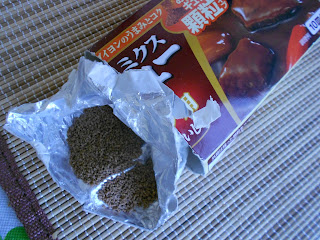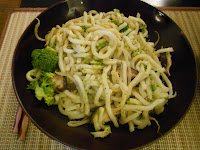A quick history lesson on Japanese curry teaches us that it was introduced into Japan late 19th century by the British, who of course were introduced to this meal by the Indians (India was a British colony at that time). After WOII the dish became very popular in Japan, and can now by ordered at one of the many Japanese curry restaurants and made a home through instant curry packages available at every supermarket. The taste of Japanese curry is now completely different from the Indian variant; it's sweeter, milder and the sauce is normally thicker.
Using widely available instant packages preparing Japanese curry becomes very, very easy to make; and all the different brands and variations ensure that everyone can buy the curry to best fit their own taste and preferred level of spiciness.
Instant packages will be in the form of either curry roux or curry powder. And you can choose which to use depending on your own preference. Normally we prefer to use curry roux, because you don't have to worry about measurements.
 |
| Curry powder |
 |
| Curry blocks |
Curry is normally served with white rice and a traditional curry has the following ingredients (2 persons):
- 200gr beef (small pieces)
- half onion
- 1 carrot
- 2 (small/medium sizes) peeled potatoes
1) Cut the vegetables and potatoes, and stir-fry the beef and onion in a fry-pan. (until beef has turned brown)
2) Add the carrot and potatoes and add water (check your instant curry package to see how much you will need, normally around 200-250ml) and let it simmer.
3) Then, add the instant curry (either curry roux or curry powder)
4) Let is simmer for about 5 - 10 minutes and serve with white rice
However, you can make curry with any ingredients you want! That makes it one of my favourite recipes to use up any left-overs in the refrigerator! We will share some of our favorite recipes later.


































